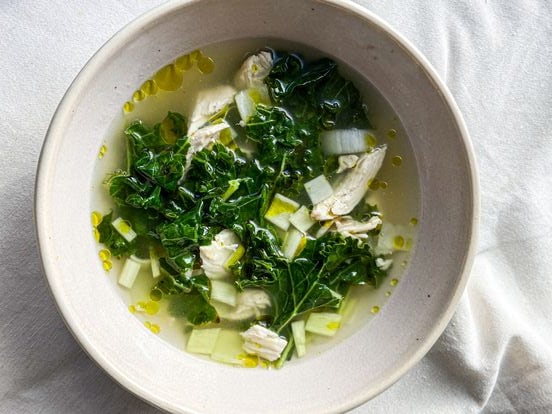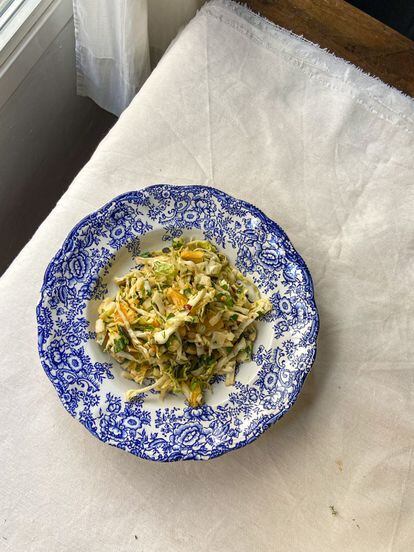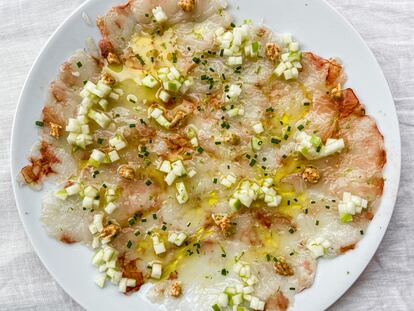The Citrus genus and the Habsburg family have one thing in common: the mania for getting together with each other and having offspring. There are only three species of citrus: Citrus medica (citrus), Citrus maxima (Chinese grapefruit) and Citrus reticulata (tangerine). The rest – lemon, lime, rough lemon, bitter orange, blood orange, sweet orange, grapefruit, kafir lime, bergamot, finger lime – are the result of their hybridizations. There is a person in Spain who guards a garden of delights where all of them can be seen; up to 400 varieties, in the town of Palmera (Valencia). Few people know more about these fruits than Vicent Todolí, behind the Todolí Citrus Foundation, a place open to the public that preserves and explores the world of citrus fruits.
So much citrus in the world, to end up making juice? Or floating in a glass with three ice cubes? What a destiny! The potential that this genre has in gastronomy is immense and this is due to the nature of its fruits. In them we find acidity, bitterness and sweetness – depending on the variety –, a special texture and at the same time a lot of juice, a skin full of very aromatic essential oils and an albedo (the white part) that also has culinary possibilities. Yes, there is nothing better than a whole piece of fruit, I am not going to say otherwise; What I come to highlight has more to do with experimentation, with a taste for variety and with the fact that less is not always more. Once you cross the doors of the kitchen, the more possibilities, ideas and tools you have, the more autonomous the cooking will be.
Its segments can be used in salads, desserts and as part of meat garnishes; Its juice serves as a dressing, marinade or as a base for making syrups; jams and quinces can be made, candied, crushed, frosted… They are wonderful flavorings – which is why they play such a prominent role in cocktails – which gives a lot of play in the preparation of sweets, for example. Even its leaves can be used – and if not, let them tell the people of Murcia – like someone using bay leaves.
What citrus fruits to use at all times? It depends on the result you expect. If you are looking for acidity, choose lemon or lime; If, on the other hand, you prefer sweetness, choose mandarins, oranges or clementines. The bitterness will be provided by the grapefruit or blood orange. The aromas, which you can extract by grating the skin or using a peeler to remove it in large sheets, can be used in any of them.
Enhance flavors and provide freshness
Our cuisine has many good things, but if I had to find a single drawback, it would be that it tends to be low in acidity. There is no need to go to the opposite extreme either, all dishes do not need lemon juice left and right: balance, friends, is once again the key, and many times only one or two tablespoons are required to find it.
The acidity makes fatty dishes much lighter. Let's look at some examples of classic cuisine that include both elements: beurre blanc or Hollandaise, two butter-based sauces that contain wine or lemon, or grilled fish. meunière. It is clear that the French had the advantage in this area, but we still have time. Use lemon or lime to finish meat or fish stews, right at the end to control the point well. The goal is not for the dish to taste like lemon, but for the result to have less greasy sensation and make you salivate more.
Also add it to soups. Whatever broth you use, whatever vegetables you put in, or whatever protein you choose: finish with a squeeze of lemon or lime juice and also a little zest to add complexity and fragrance. You've probably squeezed some lime over your tacos; Do the same with other stewed meat dishes. Incorporate it into pasta sauces when buttering them. Also use it with offal: a little lime on a Madrid-style tripe stew is the twist that you didn't know you needed.

As an essential element in salads
Adding fruit to salads is nothing new and if this mixture sounds strange to anyone, they have food literature to study. The sweet flavor they provide contrasts with the acidity of the vinaigrettes, balancing the bite very well. Citrus fruits contain both elements, acidity and sweetness, which allows you to prepare very simple dressings – the classic oil, vinegar and salt – and also create complex salads.
They can be peeled and cut into irregular pieces, but if you prefer to make a more elegant presentation, the segments can be removed directly. The combinations are endless and here we have already shared a few: with fennel; with beetroot and tofu cream; of cured sea bass and endives or with cabbage. Above all, never throw away the juice that remains on the board when you cut oranges or grapefruits. All that liquid goes straight into the salad, mixes with the oil and vinegar, surrounds all the ingredients in the bowl.

Vinaigrettes and dressings
A vinaigrette is made up of three main elements: fat, acid and salt. The mechanical force causes them to emulsify – mixing in a jar makes the task much easier to perform – although an emulsifier can be added, such as mustard, honey or garlic, to make it much more stable. Lemon and lime give us acidity, and can replace vinegar in the formula. Orange, grapefruit or tangerine juice are also interesting, because they provide bitterness and sweetness, but it is necessary to accompany them with a little wine or apple vinegar.
To start using citrus in your vinaigrettes, try the following combination: five tablespoons of grapefruit juice, two of tahini, two of extra virgin olive oil, one of apple cider vinegar and salt. This mixture is great with any variety of cabbage – raw or roasted – as well as endives or grilled leeks.

Marinate meat
The acid weakens the muscle fibers of the meat, making it more tender and increasing its ability to retain liquids. Hence, marinating the meat before cooking is always a recommended technique. In addition, it provides flavor and aroma, which never hurts: cochinita pibil is the perfect example of how citrus works in a meat stew.
The juice of some of them is mixed with oil, spices, salt and the zest of the citrus itself. The ideal is to leave it overnight in the refrigerator before stewing, roasting or grilling it. And with the liquid? It can be strained, mixed with meat broth and reduced over low heat to obtain a rich sauce to accompany.
flavored sugar
The peel of citrus fruits has many uses: it can be flavored in cakes, cookies and muffins, incorporated into sauces or grated to top some vegetable, meat or fish dishes, and give it a fresh and fragrant touch. However, this part usually ends up in the trash once we have extracted the juice. Pre-zest all the lemons, limes or oranges that you squeeze and store them in a jar with sugar: the aroma that remains is a treasure.
You can use it to sprinkle on fruit or desserts, to coat cookies before putting them in the oven or replacing sugar in any baking recipe. Many Asian dishes are made with a touch of sweetness, usually incorporating sugar in their sauces: take advantage of this to give them a citrus touch.

Candied citrus
Citrus albedo is edible if the correct technique is applied. Confitting is cooking a food in a syrup, allowing the sugar to penetrate the food, reducing its water content and, therefore, extending its useful life. When you candied citrus fruits – cutting them into slices or cleaning the white part and cutting it into strips – the albedo is soft, almost like a candy.
To make it, prepare a 50/50 mixture of sugar and water, bring it to a boil, place the citrus inside and lower the heat. You have to let them cook over low heat for at least an hour, making sure not all the water evaporates. When the syrup is thick and the albedo can be pierced without difficulty, they are ready. To let them dry, it is recommended to spread them on a tray with baking paper and leave them in the off oven for 48 hours: then they can be dipped in chocolate and be the perfect detail for any snack.
Follow El Comidista on TikTok, instagram, x, Facebook either Youtube.
#juice #citrus #fruits #cooking
/cloudfront-eu-central-1.images.arcpublishing.com/prisa/MMH6ONWF4NC5NDCOQXKEQYDUDA.jpg)
Leave a Reply